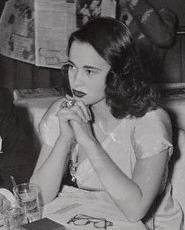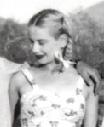Faculty of Arts,
Chulalongkorn University
Gaston
(1962)
William Saroyan
(August
31, 1908 –
May 18, 1981)
Notes
This short story was first
published in The Atlantic Monthly
in 1962. By that time, Saroyan had been living mostly in Paris for three
years. The story won third
prize of the O. Henry Awards in 1963.
25 peaches:

|
- peach (Merriam-Webster)
1a: a low spreading
freely branching Chinese tree (Prunus
persica) of the rose family that has lanceolate leaves
and sessile usually pink flowers and is widely cultivated in
temperate areas for its edible fruit which is a single-seeded
drupe with a hard central stone, a pulpy white or yellow flesh,
and a thin fuzzy skin b:
the edible fruit of the peach
2: a moderate yellowish
pink
3: one resembling a
peach (as in sweetness, beauty, or excellence)
|
26 card
table: a table for playing cards, usually square
27
boulevardier: a man who likes
to go out and socialize in public hangouts; a man who enjoys life, takes
pleasure in talking with people, eating good food, dressing well

|

|

|
| Gloria Vanderbilt |
William Saroyan |
Carol Marcus Saroyan |
Writer William Saroyan got to know this particular apartment well through
dating the highly precocious Miss Vanderbilt. A 'naive', 29-year-old Saroyan
reminisced about his first date with 16-year-old Gloria Vanderbilt,
ensconced in these River House digs, with considerable fondness.
"Gloria...poor little rich girl. Fabulous God-damned
apartment. River House is a pretty hintcy place. High ceilings, not like a
New York place...She had a two-storey apartment, and in part of it they'd
gone right through the ceiling to make what they call a cathedral ceiling.
In New York, that's unheard-of." Anyway, so we're making out a little bit on
the couch, like kids do [sic, she's 16, he's 29!], and at a certain point, I
heard some noise. I said, "What's that? Is somebody here?" She said, "That's
Nanny." I said, "What?" Her childhood nurse was living with her. God..."
Later instead of Vanderbilt, he married Carol Marcus, the debutante turned
actress with whom Gloria in those days haunted the Stork Club. Saroyan
professed to 'abhor the limited artificiality of their class.' This didn't,
however, prevent him from accepting generous gifts from Marcus' family, nor
from leaving his wife, upon discovering that looks notwithstanding, she was
Jewish!
He was the first writer I fell in love with, boyishly in love. I was held by
his unaffected voice, his sentimentality, his defiant individualism. I found
myself in the stories he told. Saroyan was the son of Armenian parents who
settled in Fresno, in California’s Central Valley. [...]
Saroyan’s prose is as plain as it is strong. He talks about the pleasure of
drinking water from a hose on a summer afternoon in California’s Central
Valley, and he holds you with the pure line. [...]
"Richard
Rodriguez on the Writing of William Saroyan," PBS Newshour (1997)

|
| Saroyan at the Algonquin Hotel, 1963 |
In one of his last essays you may find a perceptive line that tells of the
Saroyan working philosophy: "The purpose of writing is both to keep up with
life and to run ahead of it." [...]
The Algonquin Hotel. One time I interviewed him, at lunch at the writers'
mecca in New York—the storied Algonquin Hotel. He had just returned from
Paris, where he had been a joyous boulevardier, beloved by the Parisians who
admire style and audacity, and now he was enlivening the TV talk shows. He
looked, William Saroyan, exactly the way you would expect him to look. He
had a huge mustache and a booming voice and a commanding presence. He was
exuberant. He was mischievous. He was fun.
On that day he said: "I used to be the fastest telegram messenger boy in all
Fresno. My nickname was 'Speed.' Finally, I said, 'Take back your nickname.
This pace is killing me.' Anyway, I still write fast—it's my impatient
Armenian nature. I'm keen to find out how my plots end, and if I write
faster I'll find out sooner."
How he could make the English language soar! His words danced. This was
writing that was never inhabited by wallflowers. This was Bill Saroyan.
"A
Good Dose of Saroyan Is What the World Needs," The
San Diego Union-Tribune (1998).
|
Study
Questions
-
Notice
that many words in the story are offered with new,
unconventional, or complex meanings. Terms like home,
for example, or flawed,
perfect, comfortable,
fun, OK ,
and foolishness take
on senses that refuse to be rote. Choose a word or more
and follow its use, ideas and effects from the beginning
of the story through the end. What has happened to that
word or concept? Why is it interesting?
- How many different
terms are used to describe Gaston? How do the descriptions
change throughout the story? Who uses which terms, and are
they consistent in using them?
- What are some
denotations and connotations for peach? Which do you think
are relevant to the story?
- What does each
character want? Who gets what he/she wants?
- Consider expressions
that have to do with looking and seeing that appear in the
story, such as look, see, study, show, examine, and watch.
Is look the
same as examine?
What difference does seeing
Gaston and studying
him make?
- Extend your
consideration of looking and seeing further to include not
only the literal (like looking at and seeing the peach or
Gaston), but also the figurative (like observing and
understanding a concept such as the girl coming to terms
with ideas and beliefs while with her father, and then
later on the phone with her mother). In what ways is
viewing and comprehending something not with the eye but
with the mind or thought important in the story? What
effect does it have on the characters' lives?
- The third-person
limited point of view that allows us occasional peeps into
the girl’s feelings in Saroyan’s “Gaston” (ex. “he was
kind of funny”) similarly occasionally restricts us from
entering the father’s head (ex. “The man bought a kilo of
peaches but found no flawed peaches among them, so he
bought another kilo at another store”). Why does
learning about the father’s or the girl's emotions without
direct access into his or her mind at certain points a
more poignant way of experiencing the story?
- What use is
telling the story of a broken family through the allegory
of Gaston’s “broken house” and the symbolic peach with “a
break that went straight down into the heart of the seed”?
- What does the
contrast between the father-daughter dialog throughout the
afternoon and the later mother-daughter phone conversation
reveal about the father-mother relationship?
- “I want you to
be where you want to be,” is the important thing the
father gives his daughter but the six-year-old gives an
emphatic “I want a peach with people” at one point in the
story and an equally absolute “I don’t want a peach
anymore” toward the end. How are we to understand
what the girl wants and her father’s gift to her?
|
Review Sheet
Characters
Man – the girl's
father (25); 36 years old (25); "had the biggest mustache she had ever seen
on anybody" (25)
Girl – the man's
daughter (25); 6 years old (25);
Gaston – the bug
that comes out of a peach the father eats (26)
Mother – the girl's
mother
Setting
Paris
the man's home – (25)
August – (25)
morning – "That morning, on a little walk in the
neighborhood, she had seen peaches in a box outside a small store" (25)
afternoon – "on a very hot afternoon in August" (25)
Sample Student
Responses to William Saroyan's "Gaston"
Study Question: What
is this story about? After close reading the story and considering its
diction, setting, characters, dialog, plot, tone, contradictions,
repetitions and other characteristics, what themes, issues or concerns do
you see the story dwelling upon? Among some ideas that we have mentioned
in class, the story is about
- love
- stereotypes
- class
- learning, education
|
- family
- discrimination, prejudice, racism
- change
- freedom
|
- relationships
- tolerance
- growing up
- creativity, imagination
|
- divorce
- diversity
- regret, mourning
- language; the power of language
|
E-mail me your
observations, what you consider "Gaston" to be about.
Response 1:
|
|
Pimkwan
Chalasithipong
2202234
Introduction to the Study of English Literature
Acharn Puckpan
Tipayamontri
June 21, 2010
Reading
Response 1
Botched Plans
“They
were to eat peaches, as planned” (25). This
intentional mode that begins William Saroyan’s story
“Gaston” eventually becomes simple past tense that
records, one by one, actions between a father and a
daughter, none of which is the girl eating peaches
as planned. She seems to come very close to eating
“a peach with somebody in the seed” (28), but the
hope of her being with her father and sharing so
much with him is cut short by another get-together,
“a little party for somebody’s daughter who was also
six” (30).
This
is a story about hope dashed, intimacy interrupted,
a blooming imagination nipped, and interaction
thwarted. The mother’s phone call—a long distance,
disembodied voice—has more immediacy and impact than
a breathing blood father standing next to the girl,
unable to get close enough even to hug his own
daughter (32). It is a story about loss. Most
heartbreakingly, it is a loss of physical and
emotional personal contact that is careful and
attentive, to the triumph of a superficial, removed
charade of connection that is categorical, rote, and
heartless.
Works Cited
Saroyan, William. “Gaston.” Madness
in the Family. Ed. Leo Hamalian. New York:
New Directions, 1988. 25–32. Print. |
|
Response 2:
|
|
Tirakan Sinsawang
2202234
Introduction to the Study of English Literature
Acharn Puckpan
Tipayamontri
June 20, 2010
Reading
Response 1
What a Girl Wants
She
is very old, especially for a young girl of six; a
preschooler who has learned already to cry inside
(31). William Saroyan’s “Gaston” gives us a girl
who, at the beginning of the story is interested in
peaches (“she had seen peaches in a box outside a
small store and she had stopped to look at them”
25), then she wants to know “Who is it?” (27) that
climbs out of the open peach seed. The six-year-old
is curious about things around her, and, sensitive
to the adult close by, considers the new-found bug
as a fellow being: a “who,” not a “what.”
The
girl wants to thrive and to belong, and she projects
these desires onto Gaston: “‘Well, we’re not going
to squash him, that’s one thing we’re not going to
do” (28), “Put him back?,” “Can he live in our house
at all?” She claims her father’s home in Paris as
hers too, with “our.” However, after a brief phone
call with her mother, we discover her dilemma. Her
need to belong is conflicted because her mother’s
desires are incompatible with her father’s. In order
to thrive and to fit in where she lives, she has had
to prioritize her desires.
She
is her father’s daughter, nevertheless, and has
learned also that “the important thing is what you
want, not what I want” (29). The most important
thing is what her mother wants, not what she wants.
That she puts aside her wants for her mother’s (like
her father does for her), in a way shows that she is
ironically more mature than her mother. The
six-year-old defers to the thirty-year-old’s wishes
as if she is the adult and the woman is the child.
For
a girl who has to cope with and manage a complexity
of desires of diverse individuals that affect her
life since so early an age, her wants seem unlike
the usual child’s; no hugs or kisses, no peaches, no
whimsical wants, but reasoned, calculated and
non-self-centered decisions. “Long ago she had
decided she didn’t like crying because if you ever
started to cry you almost couldn’t stop, and she
didn’t like that at all” (31). But at the end of the
day, the girl, despite her brave tearless face and
formally extended hand to shake her father’s
goodbye, perhaps still wants what any girl
regardless of age or maturity wants, and that is to
best live the life she has been dealt and to be
happy. In short, she wants not to cry. And this is a
story that confirms that very old, very basic, and
very humble wish.
Works Cited
Saroyan, William. “Gaston.” Madness
in the Family. Ed. Leo Hamalian. New York:
New Directions, 1988. 25–32. Print. |
|
Reference
Saroyan, William. "Gaston." Madness in the Family. Ed. Leo
Hamalian. New York: New Directions, 1988. 25–32. Print.
Further
Reading
Saroyan, William. Fresno
Stories. New York: New Directions, 1994. Print.
Saroyan, William. The
Human Comedy. New York: Dell, 1971. Print.
Saroyan, William. My
Name Is Aram. New York: Harcourt, Brace, 1940. Print.
Media
|
|
|
|
|
|
|
- Saroyan, KVPT
Valley Public Television (2008)
|
|
|
William Saroyan
|
Biography
Resources
Other
|
Home | Introduction
to the Study of English Literature | Literary
Terms
Last
updated
August 26, 2014





